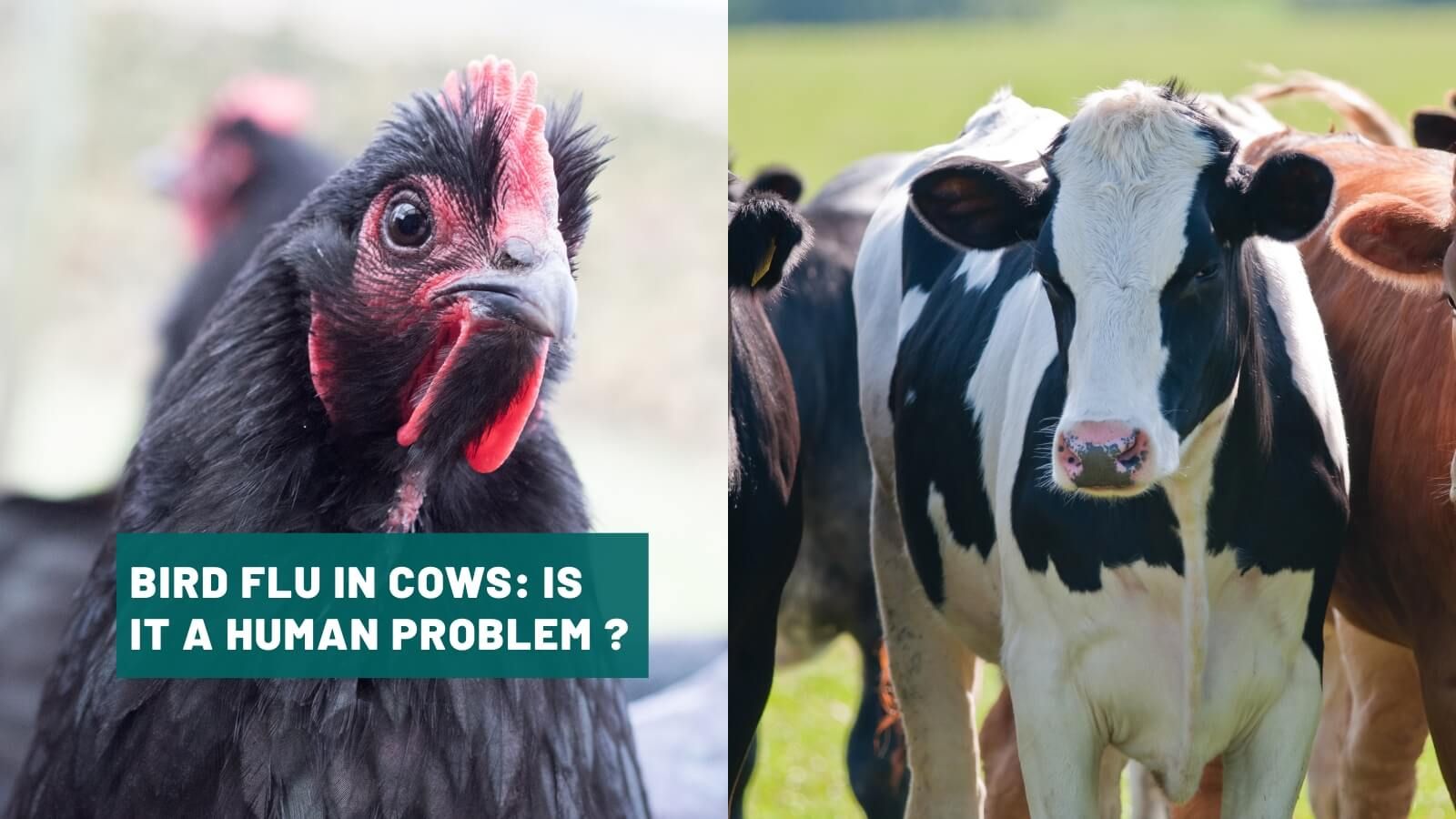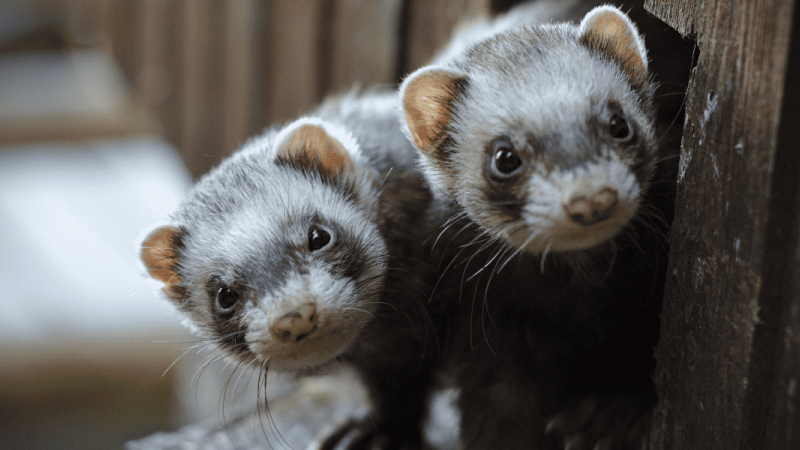
Three out of four emerging human infectious diseases come from animals. So when bird flu started infecting mammals, in particular cattle, earlier this year, it set off alarm bells in the scientific community.
Monitoring animal health is a key step in preventing health risks in humans. Given that scientists estimate that more than 60% of infectious diseases in humans originated in animals, it is an essential component of any policy aimed at anticipating and combating diseases.
Influenza: an enduring inter-species threat
More than a 100 years after the 1918 influenza pandemic, commonly known as “Spanish flu”, one of the most catastrophic public health crises in modern history, influenza viruses remain a major global health concern. Seasonal influenza kills up to 650,000 people every year. However, many scientists are more concerned about flu strains that are so far present only in animals.
Influenza A viruses are found in many different animals, including ducks, chickens, pigs, whales, horses, seals and cats. While it is unusual for people to get influenza infections directly from animals, sporadic human infections and outbreaks caused by certain avian influenza A viruses have been reported. The influenza virus constantly mutates – essentially putting on ever-changing disguises to evade immune systems and jump species. If a new virus emerges that can easily infect people and to which there is little or no human immunity, it could start a new and even more deadly pandemic. For some scientists, this is a matter of when, not if.
"Another pandemic caused by a new influenza virus is a certainty. But we do not know when it will happen, what virus strain it will be and how severe the disease will be,” said Dr Wenqing Zhang, the manager of WHO’s Global Influenza Programme. Out of 35 diseases, pandemic respiratory infections, in particular zoonotic influenza (influenza transmitted from animals), came out on top as the most likely cause of an exceptional sanitary situation in France, according to the French Committee for the Surveillance and Anticipation of Health Risks (COVARS). “The major risk is linked to the H5N1 avian flu virus. This is a significant, clearly identified risk,” declared the virologist Bruno Lina.
Bird flu in mammals : a growing concern
The influenza strain called H5N1 is a highly pathogenic avian influenza A viral strain that was first detected in birds in 1996 in China. It is one of many avian influenza A viruses that have been isolated from more than 100 different species of wild birds around the world. Infected birds can shed avian influenza A viruses in their saliva, nasal secretions, and faeces. The viruses spread rapidly through poultry flocks, but have also been known to infect mammals, including but not limited to wild animals such as seals, bears, foxes, skunks, farmed mink, stray or domestic animals such as cats and dogs, and captive animals in zoos such as tigers and leopards. While most mammal infections were probably caused by contact with an infected bird, there’s evidence that the virus has now evolved to spread directly between some species, such as sea lions.
With severe mortality rates, avian influenza can heavily impact the health of birds. H5N1 has been spreading ferociously in birds since 2021, killing hundreds of millions of domestic and wild birds around the world. Earlier this year, H5N1 was detected in cattle in 16 farms across six US states, a number which is likely to increase as US surveillance is stepped up. One person was also confirmed as infected, although symptoms remained mild. Although sporadic infections of cows with flu viruses closely related to H5N1 had already been documented, this represents the first widespread outbreak of bird flu in cows. It is concerning because of the frequency with which humans come into close contact with cattle on farms, giving the virus ample opportunity to spread to people. “In my flu career, we have not seen a virus that expands its host range quite like this,” says virologist Troy Sutton.
So far, the virus doesn’t show signs of being able to cause a pandemic. Health officials have said that the overall threat to people remains low, for now, but they are monitoring the situation closely. “If we don’t give it the panic but we give it the respect and due diligence, I believe we can manage it,” adds Rick Bright, chief executive of a public health consultancy.
Monitoring animal health to prevent human outbreaks
Understanding how cows are getting infected with bird flu will be key to controlling H5N1’s spread to other farms and people. In particular, if the virus is passing from one cow to the next without a bird intermediary, it would suggest that the virus has become adapted to transmission in mammals. Preliminary research seems to confirm this hypothesis although there is not yet enough genomic data to confirm cow-to-cow infection.
If the virus is shown to be spreading between cows, the next question will be how? So far, virus levels seem to be highest in the animals’ milk. This is good news. If H5N1 were to spread through air, it would make it much more difficult to control. Studying the transmission of the virus could also help scientists understand the recent evolution of the virus and why infections have only recently appeared in cattle, and then only in the United States, despite the virus’s global spread in the past few years.
Scientists say that bird flu – in its current form – is unlikely to spread widely in people in part because it can’t readily enter the cells that line the human nose and mouth. However, the more mammalian species the virus infects, the more opportunities it has to evolve a strain that could gain entry to these cells and be dangerous to humans. At the moment, the biggest threat is likely to come from pigs. Pigs host many influenza A viruses, making them a “mixing bowl” in which strains of avian and mammalian viruses can potentially interact and become more efficient at transmitting to people.
For the time being, researchers are largely focusing on monitoring and understanding the animal viruses so that they can be better prepared in the event that any one of them should jump to humans. Scientists are on high alert for any changes that could raise the risk for people. In line with these efforts, health organisations worldwide are campaigning for preventative measures that will block the spread of avian influenza at its source by rapidly detecting, reporting and responding to outbreaks in animals, and strengthening influenza surveillance in both animals and humans. Risk-based surveillance in animals coupled with epidemiological and virological investigations around animal outbreaks and human infections will allow for an early and effective response. Globally, an international collaboration between the animal and human health sectors is crucial to the preparedness and response in the event of the emergence of a new influenza virus in humans.
Last edited: 30 April 2024 10:36



